I found it oddly enchanting that in a city of eight million residents there was a pretty good chance we were the only people currently doing this specific activity. Crazy might be another word for that.
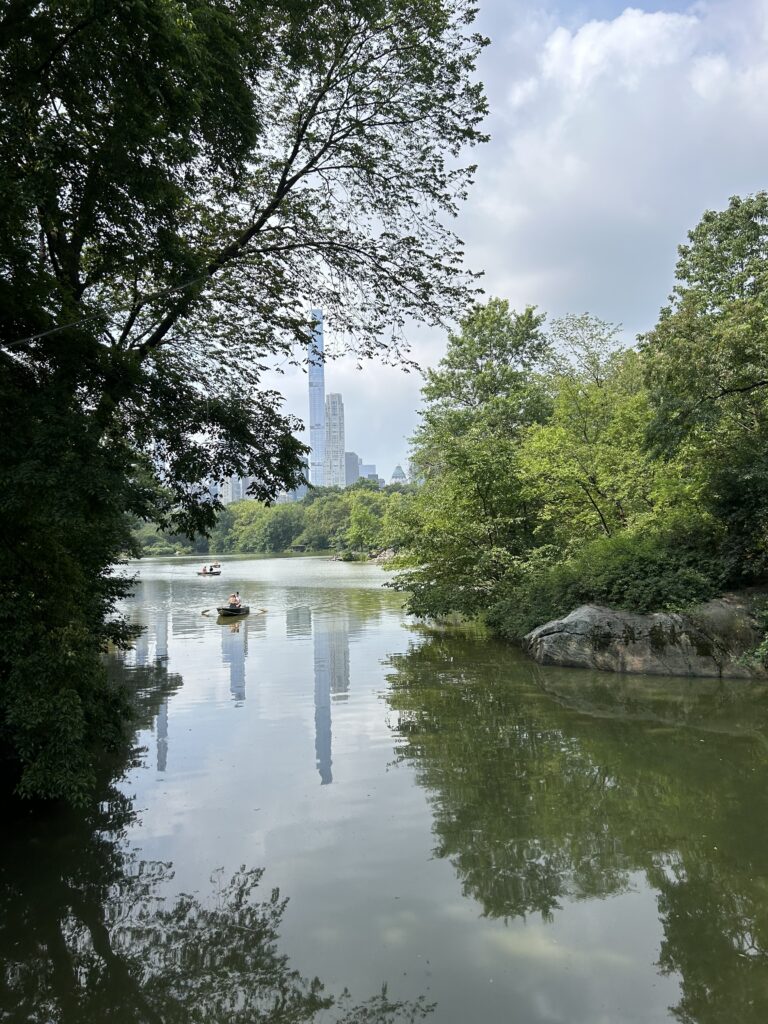

New York City has come in and out of my life over the years in many different forms. Less than an hour’s commute by train or car from where I grew up in New Jersey, I’ve visited hundreds of times over the last couple decades, and the town’s proximity to my upbringing has undeniably imprinted on me. I’ve cheered the Big Apple’s teams, attended concerts and Broadway productions, toured museums, and been inspired in a way that only spending your entire life around one of the most famous cities on the planet can provide. But I’ve never fished it.
Not having made a cast in the Big Apple isn’t exactly a fly fishing sin. Yet there are several bodies of water in the heart of Manhattan that hold some of the world’s most popular sportfish, and for a city whose centuries long history and nuances have been studied under a microscope, very little information on its recreational angling exists. My good friend and warm water aficionado Franky DeMayo shared my interest in the fishery, and on a humid Saturday in early July we boarded a train with our five weights to Penn Station.
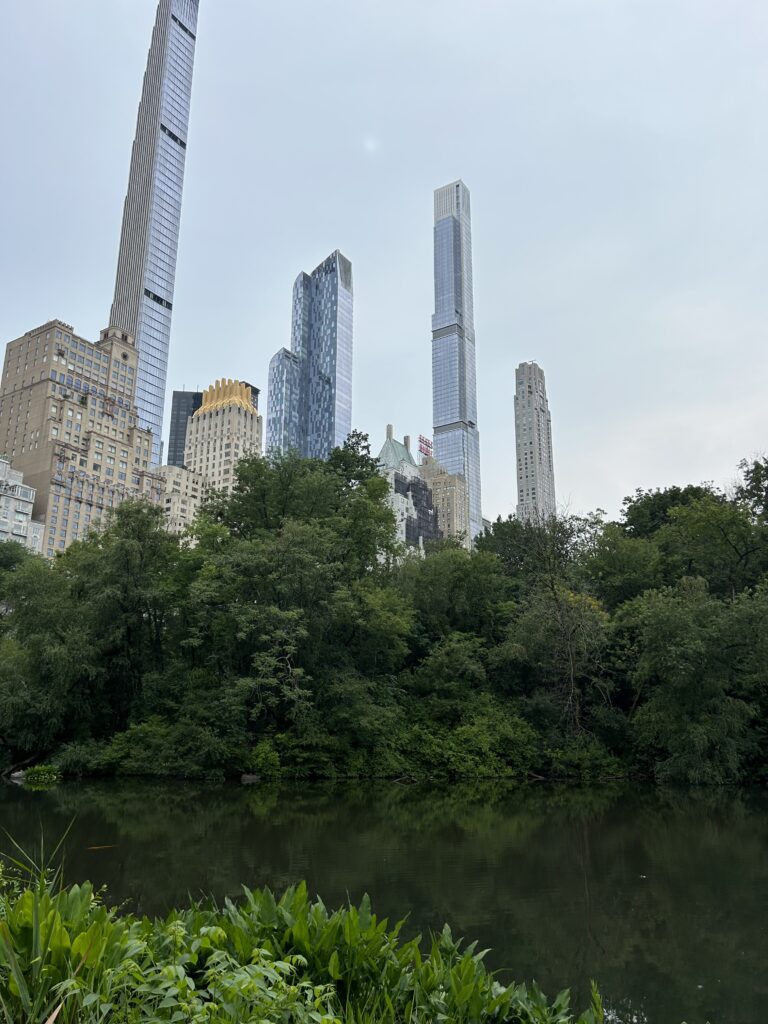

Our plan was to begin at the southern end of Central Park and work our way North. We had confirmed through a few old online fishing forum entries that most of the ponds in the park were open to fishing and had fish in them, although there was almost no mention of them being targeted on the fly. We were ready to catch whatever fish Central Park would give up, but carp were high on the list if the opportunity presented itself.
We started the morning at “The Pond”, an astutely named body of water along the park’s border with West 59th Street. It was loaded with panfish, even more than I had expected. Clouds of bluegill hovered just off of the banks, and little largemouth bass cruised the shallow sands off of Gapstow Bridge. Franky and I got on the board quickly with a handful of fish on mini crawdad presentations, and checked our New York City fish off the bucket list.
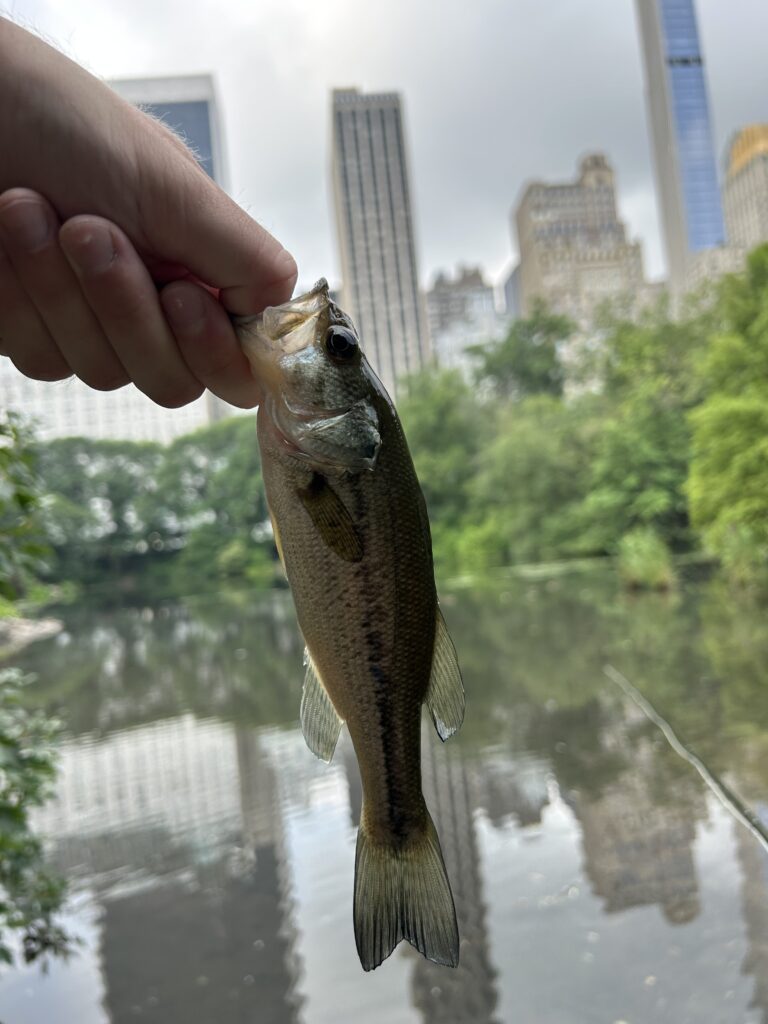

Then we saw them. Gliding out of the glare of skyscraper reflections, a group of large koi and carp came into view. They grazed along the muddy bottom with no concern for the hundreds of people moving along the banks. Franky and I scoped out a couple open sections of the shore hoping to intercept one, but their distance and lack of casting room made getting to the actively feeding fish impossible at the moment. After stalking the fish for some time, we decided to move on to another pond.
“The Lake” was up next. This was a much bigger body of water but there was a more extensive trail system that surrounded it. As we started our reconnaissance of the area, there also appeared to be more carp. We took this to mean that we would get more and closer shots at feeding fish, but we were only half right. We could indeed spot more fish as we worked our way clockwise along the lake’s perimeter, but access was still difficult. Where fish would normally be in range, we had thick brush or throngs of people at our backs. This ended up forcing us to make shorter roll casts with our awkward, weighted flies. Spooking fish wasn’t an issue. We just couldn’t get in front of them. As the morning went on, the crowds really grew. The rowboat rentals began picking up, and we began to see way less dark shapes cruising the lake as the number of paddlers increased.
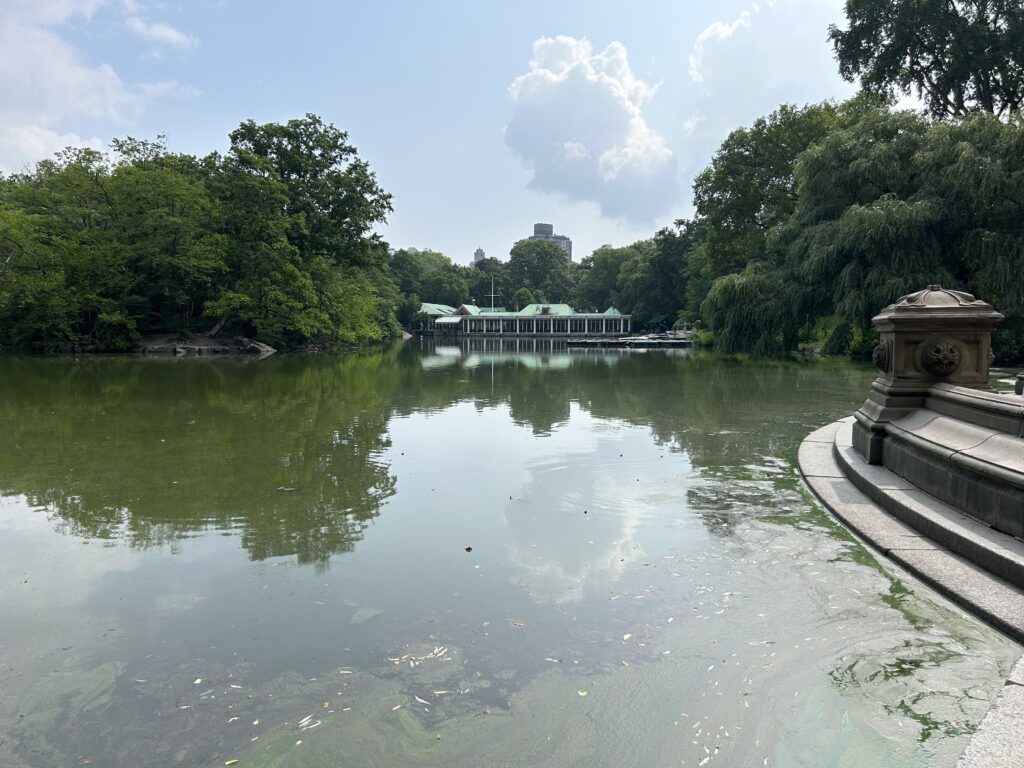

After a long walk we arrived at Harlem Meer, in the complete opposite corner of Central Park from where we started. Our initial research had told us this is where fly anglers had past success with carp, but we didn’t see any sign of them after a few passes around the pond.
We took a quick hot dog break and assessed our situation. Franky and I were now miles from where we started, and hadn’t had much real luck chasing the giant Cyprinidae of Manhattan. We needed a morale booster, and decided to check out The Loch, Harlem Meer’s feeder stream. The creek flows suspiciously milky but clear for about a quarter mile and features several small waterfalls, plunge pools, and slow running flats. This area was also surprisingly wooded and remote compared to the other waters we had hit already.
Almost immediately we spotted some fish suspended under the muck. Franky fired off a cast with a weightless, slow sinking egg pattern and we watched one of our targets engage and take in the fly. It turned out to be a pretty decent bullhead, one out of a school of a few dozen cruising the muddy creek bottom. During one of the more unique fly fishing opportunities I’ve seen, Franky and I spent a half hour sight fishing more catfish out of the area.
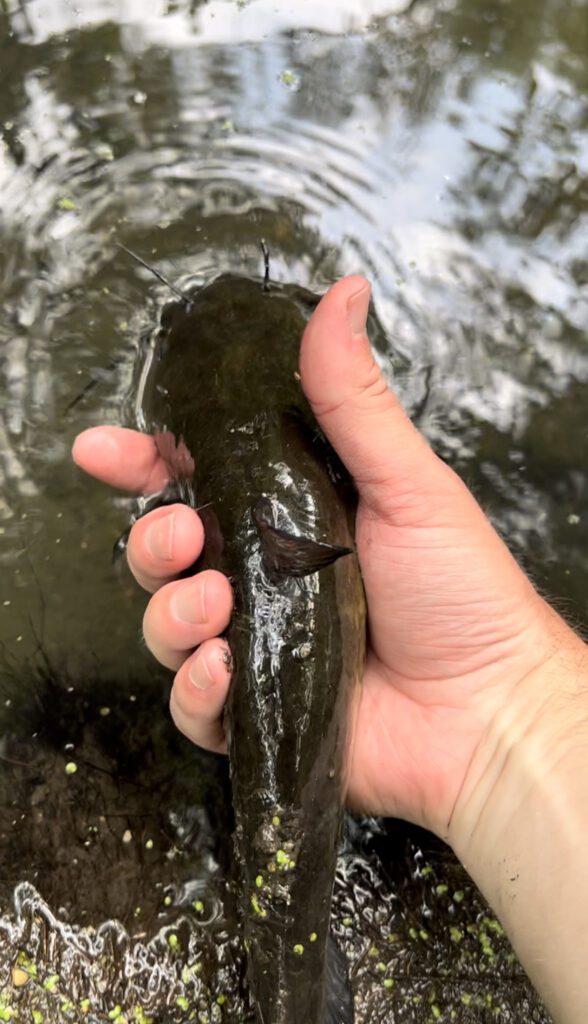

As we worked up the creek, we encountered more sight fishing to schools of bluegill and some surprisingly decent bass. At the pond at the top of The Loch, Franky and I found a pod of some of the biggest bluegill I’d ever seen. The fish were bigger than my hand and took down our attractor dries without hesitation. This creek section was one of the biggest shocks of the trip for me. The variety of water types in the Loch’s short stretch held a good amount of species, some of which were actually trophy sized. Central Park’s waters had already exceeded my expectations, but as we emerged from the woods and saw the shadows of the buildings growing longer, we knew we had to take one more shot at the fish we had come for.
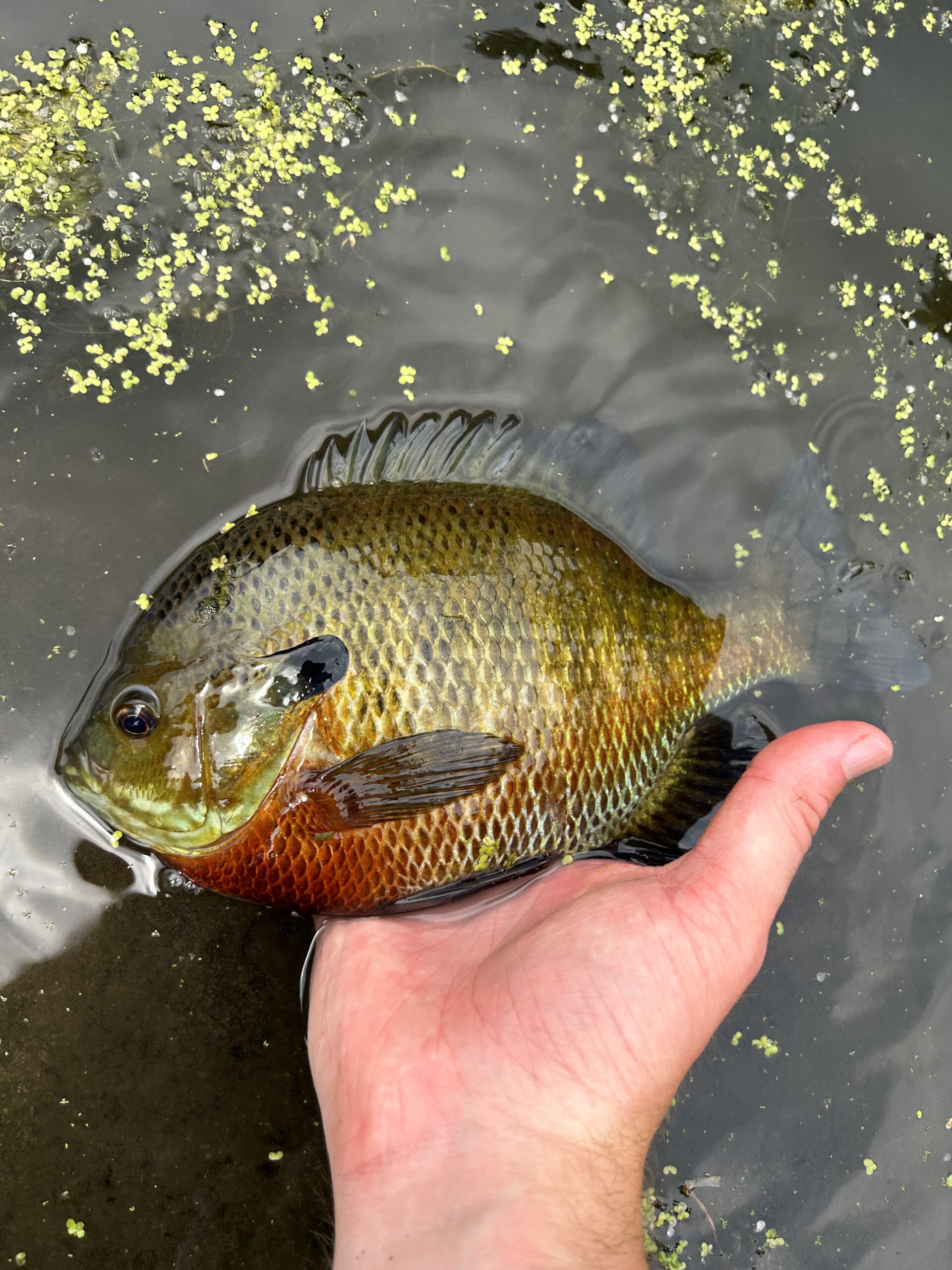

Late in the afternoon we arrived back at The Lake. At this point we knew getting a carp on the fly in the park would require a narrow window where fish location, feeding behavior, pedestrian traffic, and our own position would have to align. Then it was up to us not to screw it up. Rowboats had been splashing out on the water for the last several hours, and we were definitely seeing less fish in spots that would’ve been ideal earlier in the day.
We headed down the path towards a bridge crossing that was especially crowded. Conveniently, it also turned out to be the place where we finally had an open shot at a tailing carp in a fairly open section of the pond. Franky spotted the fish moving towards the bank, and rushed into shore-side pull off of the sidewalk just as the photographing pedestrian occupying it was miraculously moving out. He hit a perfect leading cast on the fish and we both watched as the carp stiffened up, made a slight adjustment in its course, and slurped down Franky’s sinking nymph. Franky fought the fish in front of about a hundred people, and after a few minutes I received a face full of NYC park water and a carp in the net.
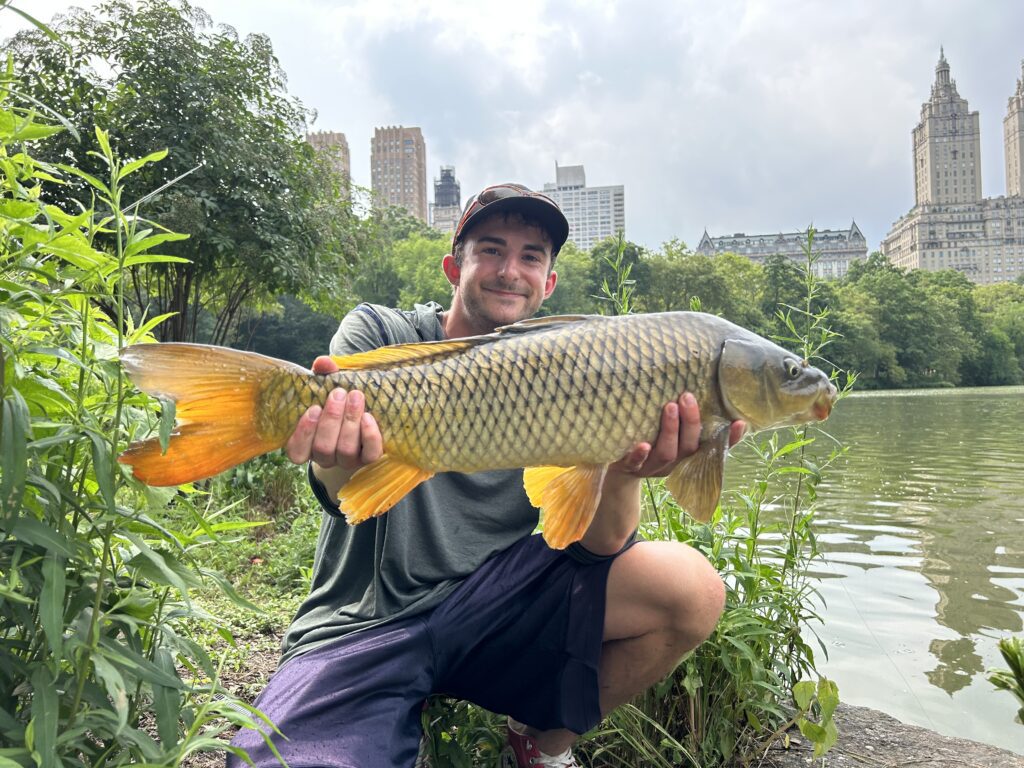

That buzzer beater carp pretty much rounded out our Central Park fishing experience. Franky and I saw plenty of other great signs that will require another trip someday, but for now I’m satisfied with how we made out. New York City may not be a fishing town, but I’ve found that one of the most overlooked opportunities of our sport is the chance to make the most of it wherever we live. Many of us can’t make the drive to our favorite beach or mountain destination every day of the week, so if you want to put in time on the water you’ve got to bring the fishing to you.
Urban fishing has its own charm, and Central Park is no different. Franky and I fished around crowd drawing street performers, explained our mission to curious tourists, and may or may not be in the background of about half a dozen wedding/proposal photographs. It’s all fun, and you tune most of it out anyway. After all, there’s fish to catch.
